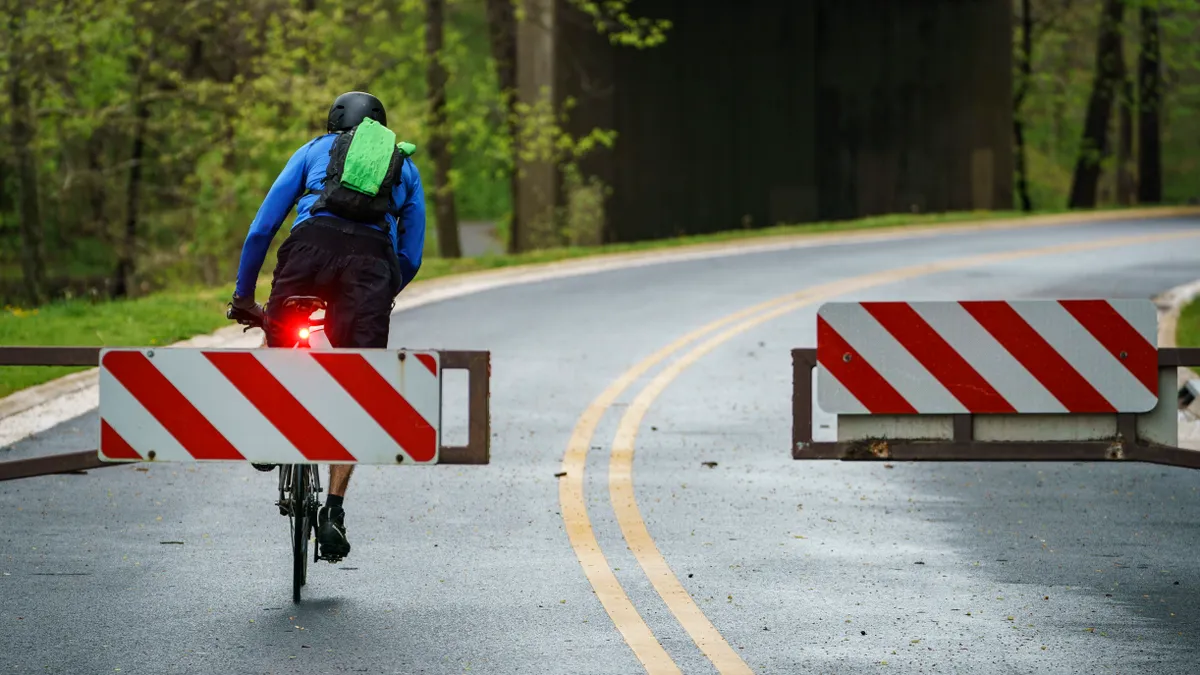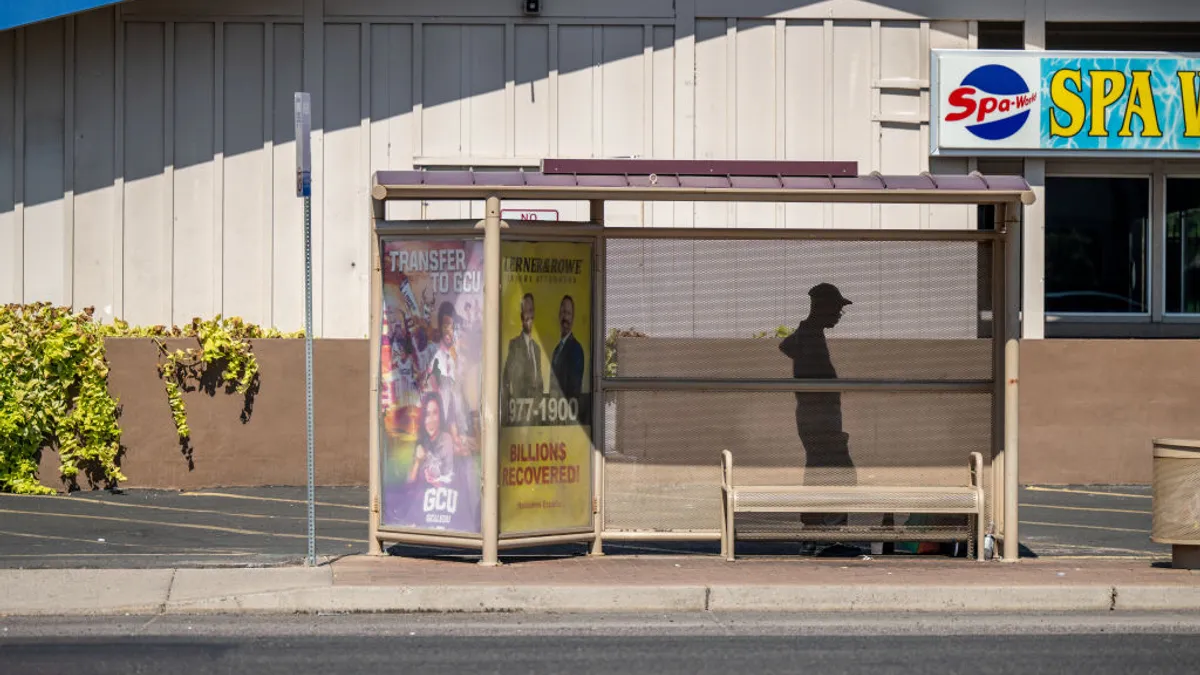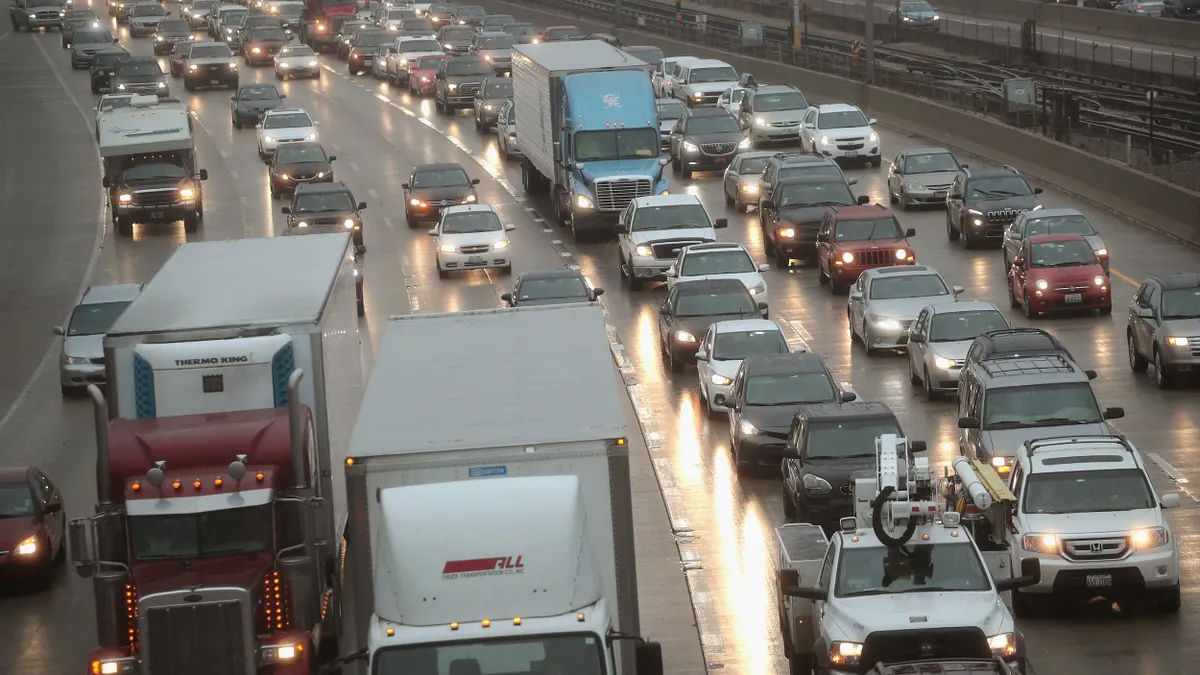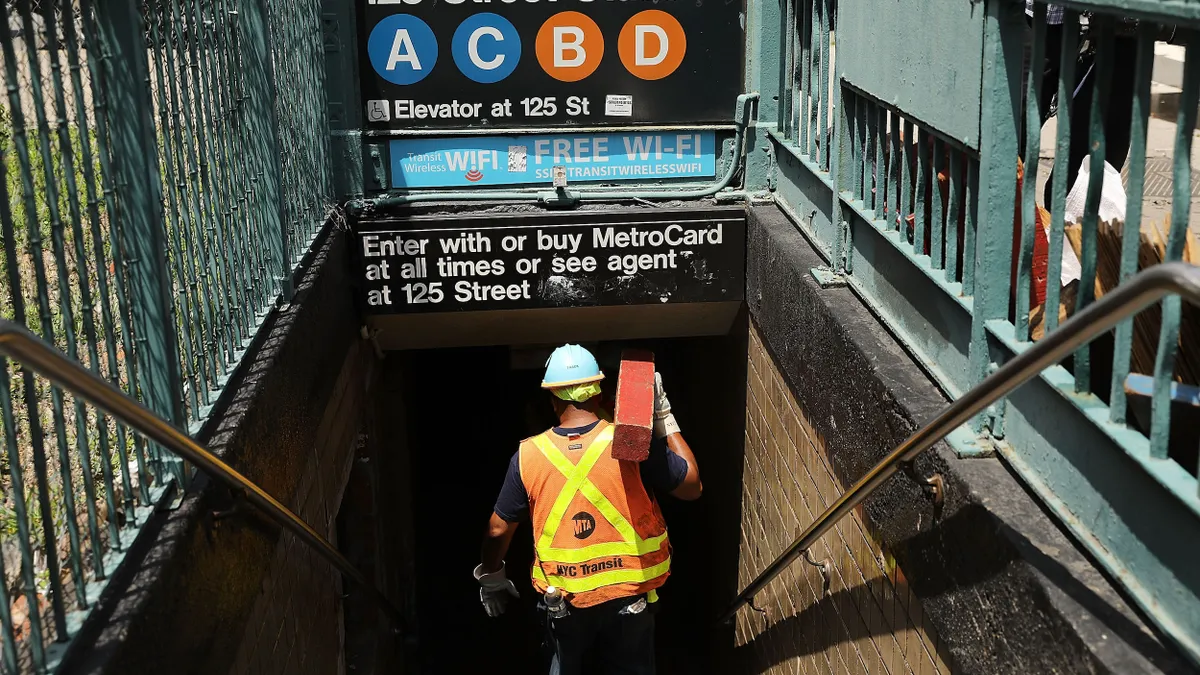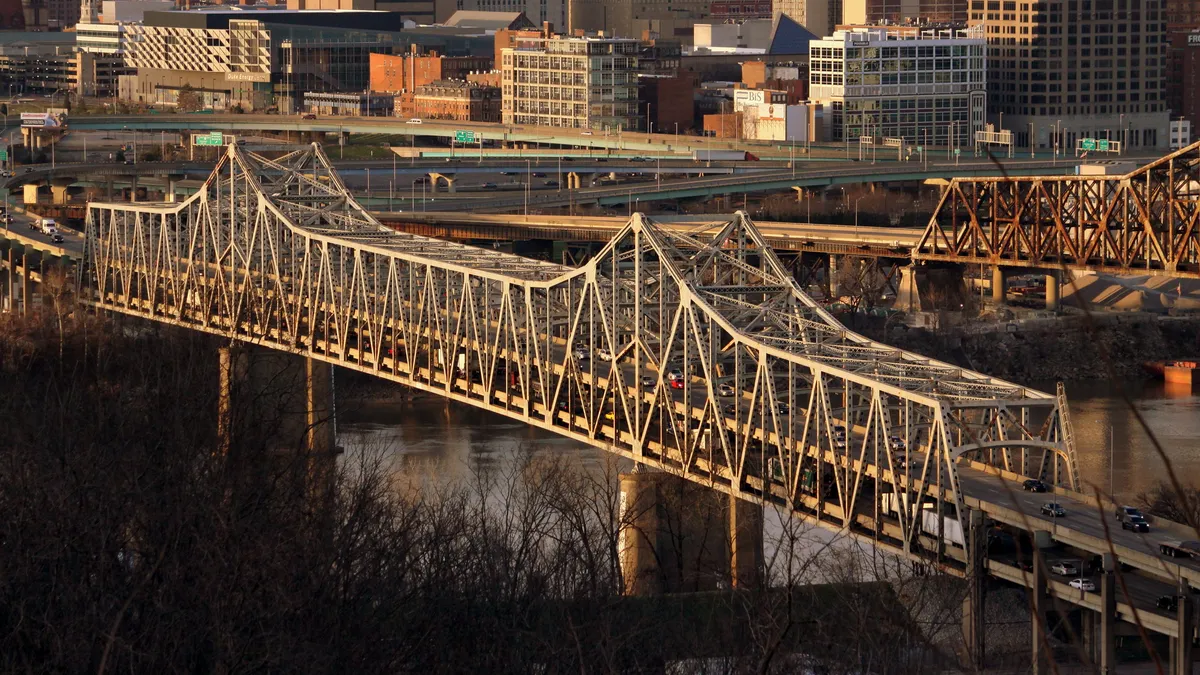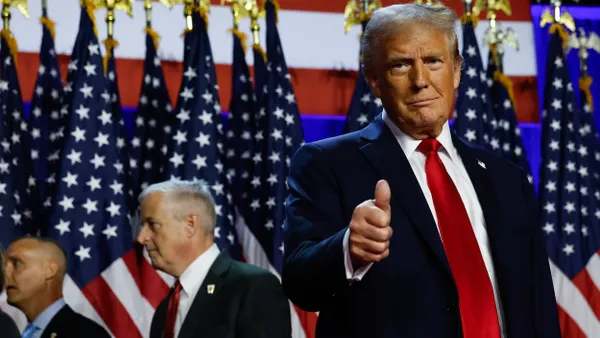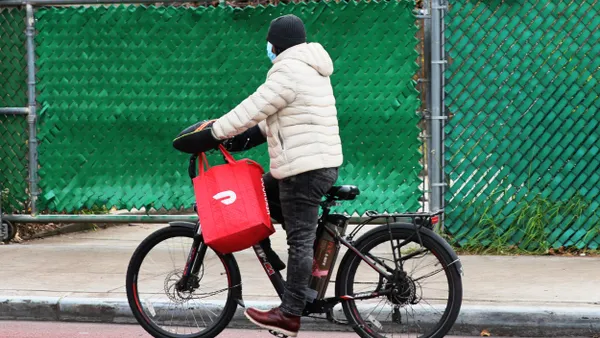When Washington, D.C. cyclist Jim Pagels, 29, was struck and killed in a motor vehicle crash while riding his bike not far from his home April 9, the tragic event added to the District’s 15 traffic-related fatalities to date in 2021, according to Metropolitan Police Department data.
Pagels, a PhD student, was vocal about the need for safer streets, and he had tweeted about the topic hours before the crash.
Had to bike through a roundabout over a highway to get my Covid jab. Lifespan maximization function is clearly perfectly well-calibrated. pic.twitter.com/Zw62SRq70w
— Jim Pagels (@jimpagels) April 9, 2021
Pagels' death follows an especially dangerous year for traffic safety across the U.S. Fewer vehicles on the road during the pandemic appeared to embolden drivers to travel at faster, more dangerous speeds. Pedestrian deaths were up 20% nationally in the first half of 2020.
DC was not immune to that trend. Police records show 37 traffic-related fatalities in 2020, making it the most lethal year on that metric since 2008.
"The main takeaway from the changes in traffic patterns during the pandemic is that our streets are just so over-built for cars, we've given over so much space," said Washington Area Bicyclist Association (WABA) Communications Director Colin Browne.
'Glacial' progress on making streets safer
Even with 2020’s record traffic fatalities, the 15 fatal events in DC so far this year are well above the nine that had occurred by this time in 2020. The April 9 crash was one of multiple fatal incidents this month. Within the last week alone, a driver struck and killed two pedestrians walking on a park road April 24.
Prior to 2020, DC traffic fatalities dipped in 2019 after reaching a previous recent high in 2018. Recognizing the need to do more to reach the city's goal of zero traffic fatalities and serious injuries by 2024, council members introduced the DC Vision Zero Enhancement Omnibus Amendment Act in 2019.
These latest tragedies come just few months after that unanimously approved bill became law. Even with the Vision Zero law now in effect, certain key components of the bill require funding that the city has not yet allocated. Safety advocates continue to call on DC leaders to fully fund and implement Vision Zero policies. Mayor Muriel Bowser is due to release a proposed fiscal 2022 budget in May.
Hundreds of people attending tonight’s memorial bike ride. Friends sharing memories of Jim Pagels and urgent calls for safe streets.
— Greg Billing (@gregbilling) April 15, 2021
Fund the Vision Zero Bill Now. #bikedc #walkdc #endtrafficviolence pic.twitter.com/XsLkHJr5QQ
The Vision Zero enhancement law reduces speed limits to 20 miles per hour on certain roads, mandates new sidewalk installations and connections, requires new public space permit applicants to include pedestrian infrastructure, and tasks the District Department of Transportation (DDOT) with sharing more information with the public and issuing certain reports.
While WABA believes the bill "had a lot of good stuff in it, functionally it’s a legislative Band-Aid on what should be an executive problem," said Browne. "When it comes to the nuts and bolts of actually making streets safer, progress is just glacial."
An analysis from DC’s chief financial officer last year found the bill would cost $171 million to implement over a four-year period. Several sections of the bill await funding. Such provisions include infrastructure enhancements — such as for sidewalks, bike lanes and crosswalks — and expansion of automated enforcement cameras. DDOT would need 17 new employees to perform all required functions, the analysis says.
DDOT Interim Director Everett Lott said the city has begun implementing parts of the bill this year that do not require funding, such as prohibiting large trucks from parking next to bike lanes.
According to the office of Ward 6 Councilmember Charles Allen, who wrote and led the introduction of the bill, the provisions able to take effect without funding included adding the Department of Public Works director to the Bicycle Advisory Council and the Department of Motor Vehicles director to the Major Crash Review Task Force.
Meanwhile, safe street advocates continue to argue that cars and their stronghold over city streets are at the root of dangerous conditions.
"In just the past month, the District has endured several tragic deaths or serious incidents involving people driving cars and more vulnerable road users. Making progress on improving the safety of pedestrians, bicycle riders, public transit users, and drivers holds so much potential for our future as a city, yet we refuse to take any real steps that would upset the status quo of putting cars ahead of all else," Allen said in an emailed statement. "Right now, I can’t blame parents or riders who don’t feel comfortable or welcome trying to ride a bike instead of drive."
Potential pandemic-fueled and national solutions
DC piloted a Slow Streets program during the pandemic, which entailed lowering speeds to 15 miles per hour in some neighborhoods and closing them to through traffic. Although DDOT is ending the current program at the end of May, Lott says they “will be looking to kind of retool and reimagine what streets will look like after that,” and people can expect to see a different version of the program in the future.
Another pandemic-era program that closed off some streets to cars were "streateries," or restaurants’ expansion of dining space into streets to allow for more distanced outdoor seating. "We have found that those have really worked well. Businesses have really had a positive reaction to that, residents have had a positive reaction to that, and so it is something that we're planning to continue as we even move out of the pandemic here," Lott said.
At the national level, there appear to be potential street safety advocates within the U.S. Department of Transportation. Meera Joshi, a New York City Vision Zero veteran, was appointed deputy administrator of the Federal Motor Carrier Safety Administration. Even Transportation Secretary Pete Buttigieg has been spotted cycling in the District.
Anybody have tips for riding a bike in a new city? Asking for a friend ???? https://t.co/1WbrMexoVy
— TransportationGov (@USDOT) February 26, 2021
Although much of the transportation focus of the American Jobs Plan infrastructure package addresses cars, electric ones specifically, there is $20 billion earmarked "to improve road safety for all users," with funding for state and local Vision Zero plans "and other improvements to reduce crashes and fatalities, especially for cyclists and pedestrians," the plan states.
As long as cars are in the picture, the single most effective step a city can take to cut down on the number and severity of crashes is to slow vehicles, according to Leah Shahum, founder and director of the national nonprofit campaign Vision Zero Network. That speed reduction can come from redesigning roadways or lowering and better enforcing speed limits.
More than 45 cities have committed to Vision Zero to date, and the Vision Zero Network is working to receive a national commitment from the Biden administration to push for zero U.S. traffic-related deaths by 2050.
As for DC, "It takes political will to make change," Shahum said. "The more important part will now be making the changes called for in that bill. And let me say that from my reading of the bill ... it's not a cure-all, it's not a perfect solution, but if implemented consistently and fully, it can have real benefit in moving Vision Zero talk to action, and real results in safety."
Clarification: This story has been updated to better reflect Councilmember Allen's role in introducing the Vision Zero omnibus bill.



